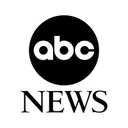What Is a Federal Pell Grant, and Who Is Eligible?
The Pell Grant is a need-based federal financial aid program for undergraduate college students from low- or middle-income households.

Many, or all, of the products featured on this page are from our advertising partners who compensate us when you take certain actions on our website or click to take an action on their website. However, this does not influence our evaluations. Our opinions are our own. Here is a list of our partners and here's how we make money.
The Pell Grant is a financial aid program from the federal government designed to help undergraduates from low- and middle-income families afford college. It's free money for college. Pell Grants don’t require you to repay the loaned money, and they don’t charge interest, unlike student loans.
Here’s what to know about Pell Grants, including eligibility requirements and how to apply.
» MORE: How to pay for college
How much is a Pell Grant?
The maximum Pell Grant award is $7,395 per academic year, though the amount you could receive depends on:
Your level of financial need.
Your college’s cost of attendance.
Your part- or full-time student status.
If you’ll be enrolled for a full academic year, or for a shorter period.
You can receive Pell Grants for 12 semesters, or roughly six years.
In some situations, you could be eligible for a larger Pell award – up to 150% of your scheduled award. For example, let’s say you are awarded a $4,000 Pell Grant. If you decide to enroll in the summer term in addition to your full-time fall and spring semester courseload, you would be eligible for 150% of your award, which is $6,000.
» MORE: Guide to college grants
Pell Grant eligibility
To qualify for a Pell Grant, you must meet the following criteria:
Be a U.S. citizen or eligible non-citizen (a U.S. national, permanent resident or refugee).
Have a valid Social Security number.
Have a high school diploma or GED.
Be pursuing an undergraduate degree or postbaccalaureate teacher certification program at a U.S. institution.
You have not earned a bachelor's, graduate or professional degree.
Demonstrate significant financial need, as determined by the information you submit on the Free Application for Federal Student Aid (FAFSA).
You can receive funding from only one school at a time, so if you’re dually enrolled, you’ll qualify for funding to attend one of them.
How to apply for a Pell Grant
There’s no specific application for the Pell Grant. Instead, your Pell eligibility and the amount you receive is determined by financial need, which is calculated with information you provide on the FAFSA.
You must submit a new FAFSA ahead of each year you’ll be enrolled in school to maintain Pell eligibility. Always accept any grants, scholarships and work-study opportunities first before considering student loans.
How to estimate your Pell Grant award
Knowing how much financial aid you may qualify for can help you decide where to attend college. Use the Federal Student Aid Estimator tool on the Education Department’s website to check your potential Pell award.
There’s no strict income cutoff needed to qualify for the Pell Grant. Instead, your eligibility is based on your Student Aid Index (SAI), which is a number between -1,500 and 999,999 that you receive after submitting your FAFSA. A lower SAI indicates a higher financial need. For example, if you have an SAI of -1500, you’ll likely qualify for the maximum Pell Grant award of $7,395.Once a school offers you admission, it will send a financial aid award letter that includes your official Pell Grant award. Contact your college’s financial aid office with any questions.
How do I receive my Pell Grant?
You receive Pell Grant funds at the start of each term. For example, if your grant is $4,000, you’ll get $2,000 in the fall and $2,000 in the spring.
Your college will first apply funds from a Pell Grant toward your tuition, fees and on-campus housing costs. Any leftover Pell Grant money is typically paid to you to cover other education expenses, such as textbooks, supplies, transportation and off-campus rent.
Do I have to repay a Pell Grant?
In most cases, you’ll never need to repay a Pell Grant. But there are a few scenarios in which you may have to repay some or all of your grant award:
You withdrew early from your academic program.
You switched from full-time to part-time enrollment.
You got outside scholarships and grants that reduced your need for federal financial aid.
You received Pell Grant money from more than one school at the same time.
Your school will notify you if you must repay any part of the grant. Upon receiving notification, you’ll have 45 days to pay in full or establish a repayment plan. That’s crucial: If you don’t repay or make an arrangement, you’ll lose your eligibility for any federal student aid in the future.
Incarcerated students now eligible for Pell Grants
As of July 1, 2023, incarcerated people — those in juvenile justice facilities and local, state and federal correctional facilities — can use Pell Grants to pay for Prison Education Programs (PEPs) that lead to a professional certificate, associate degree or bachelor’s degree from a partner university.
To be considered for a Pell Grant, incarcerated students must submit the FAFSA. Because correctional facilities may offer limited or no internet access, students may need to submit a paper copy of their FAFSA application to a partner college representative at their facility. The partner college will then submit the FAFSA on the student’s behalf to the office of Federal Student Aid, which will evaluate the application and determine Pell Grant eligibility.
Other ways to pay for college
Even if you get the maximum $7,395 Pell award, it’s probably not enough to cover all of your college costs for the year. The total annual cost of attending a 4-year in-state public college was $22,389 in 2022-23, according to the National Center for Education Statistics. Out-of-state and private universities can run tens of thousands of dollars more.
Use other financial aid to fill in the gaps. Submitting the FAFSA unlocks additional funding options, like federal student loans, work-study and scholarships. Your state may have its own financial aid application you can submit to qualify for state-based financial aid.
Prioritize financial aid you don’t have to repay, like scholarships and grants, before turning to federal student loans. Private student loans should be a last resort to fill in remaining gaps.









